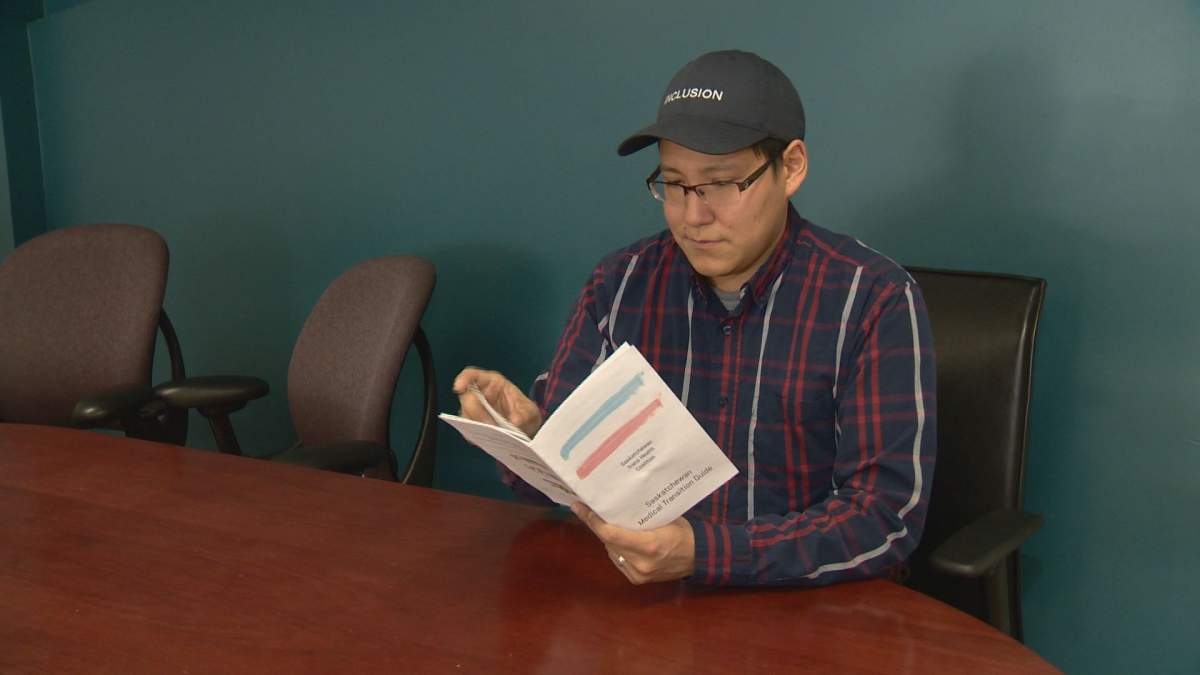When Cat Haines moved back to Saskatchewan three years ago, one of her biggest concerns was accessing hormones. She had already begun her gender transition while living in California.

“I wasn’t really sure where to start. I reached out to TransSask. I reached out to Planned Parenthood, because in the U.S. at least Planned Parenthood does a lot of transition care,” Haines explained.
“Just sort of by luck, Planned Parenthood had a doctor who had been volunteering with them who also treated some patients and I was able to connect up with her, but that was really a stroke of luck for me.”
Haines serves as co-chair for TransSask Support Services.
Usually, information about what doctors can aide a transition passed by word of mouth in Saskatchewan’s transgender community.
This is why The Saskatchewan Trans Health Coalition (STHC) created the Saskatchewan Medical Transition Guide. Created by trans patients, advocates, LGBTQ+ service organizations, frontline medical staff and others – the guide compiles services provided in Saskatchewan, those performed elsewhere, coverage and costs of a wide variety of procedures.
“There’s sort of one main page that the government has to talk about all of transition care. It doesn’t really give a lot of information on where or how to get started,” Haines said. “So one of the goals of this is to help get people started and also to help doctors that are treating transgender patients.”
The guide was released online Tuesday, Feb. 5, and quickly received positive reviews in the trans community.

Get breaking National news
“I had somebody call this morning just to talk about this process. They’ve been trying to navigate for months and this just brings a lot of clarity to what they’re trying to understand,” Haines said.
Beyond cosmetic
The trans community experiences higher rates of depression and suicide. Haines said some of this is attached to societal stigma the trans community faces.
“For a lot of people, transitioning is not just about changing how you look to satisfy yourself. It’s about safety and about being able to live comfortably and not be harassed on the street for being transgender,” Haines said.
That rings true for OUTSaskatoon’s Jack Saddleback. Prior to his top surgery in April, 2018, he experienced a great deal of anxiety doing simple things like getting dressed in the morning.
“The amount of anxiety that would come with just with thinking that I have to go outside of the door and face this world where I have had experiences of folks misgendering me on purpose or by accident, or whether or not they’re purposefully looking at my chest and trying to see, to size me up,” Saddleback said.
“To have to go into different work environments or other places where I needed to kind of be a little bit more at ease, and I couldn’t because there was always this thing in the back of my mind that they’re going to try and bother me in some way because I don’t look the way a typical cisgender man is supposed to look.”
With information on procedure options now more easy to access, Saddleback believes it can help reduce costs on mental health care and social service systems.
Saddleback said that transitioning is not for all trans people, but for those that want the option, he hopes this guide can help them find what he’s found in the past year.
“After coming off that operation table I have had probably one of the best years of my life,” Saddleback said.
“It’s like a whole new world. Experiencing it in new ways that I feel very privileged to be able to have this type of happiness.”









Comments